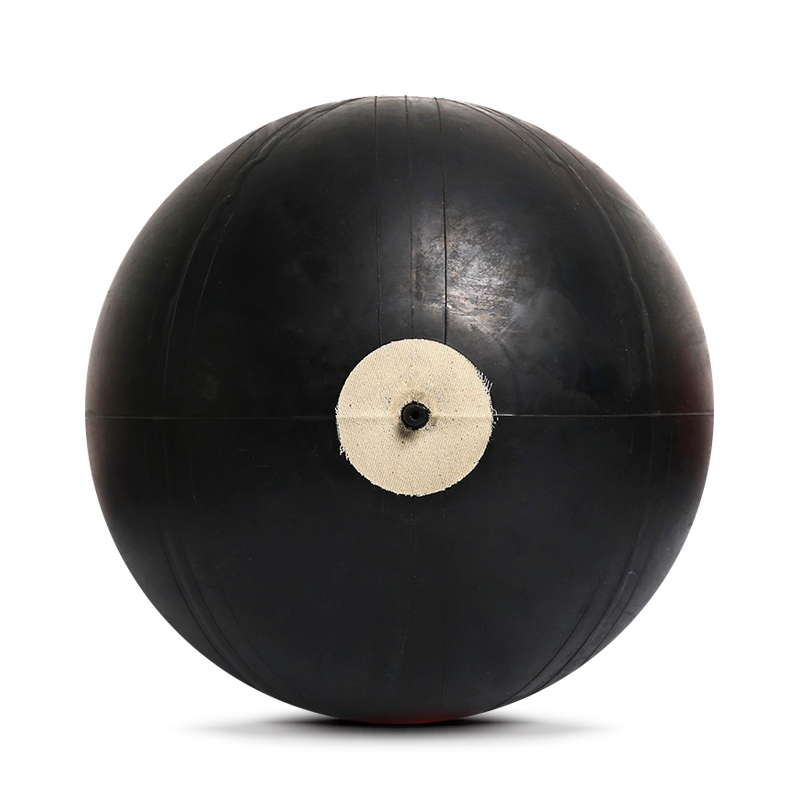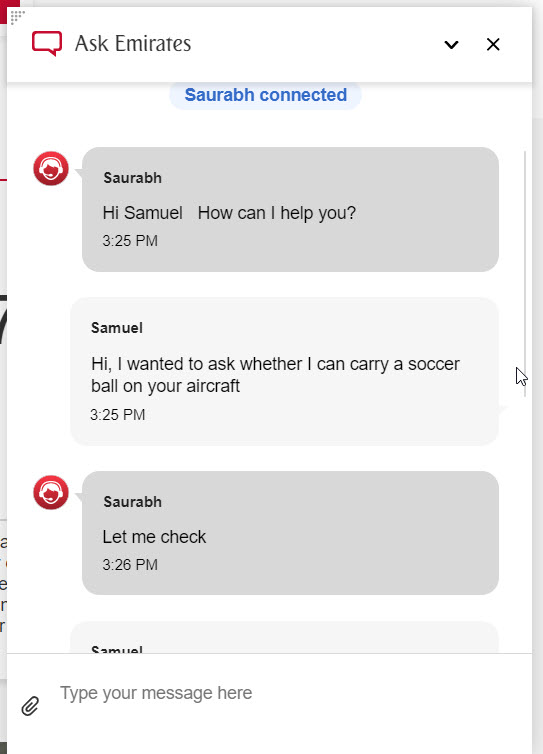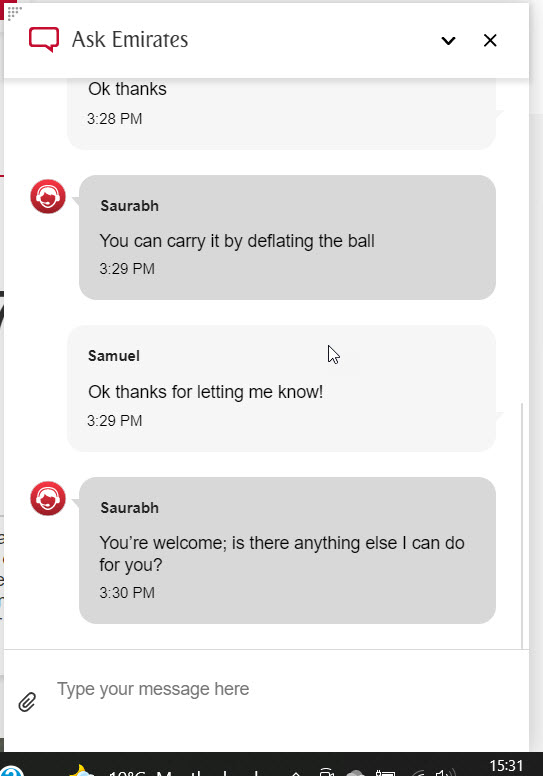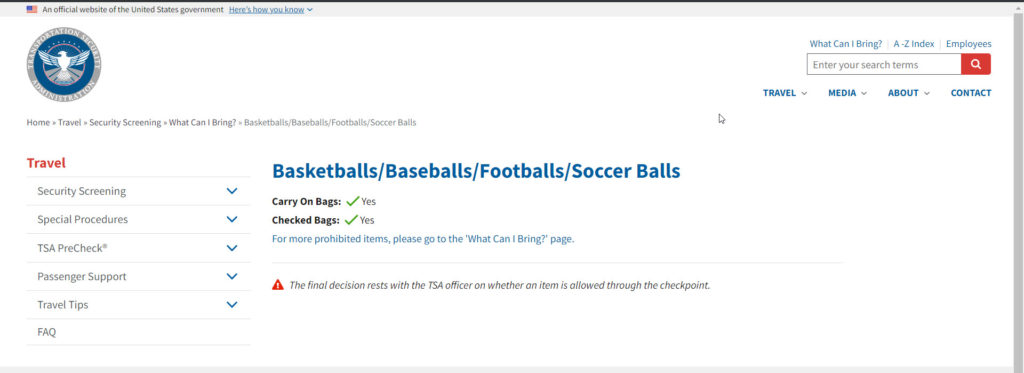Planning for a flight can definitely be a hectic undertaking.
You’ve got to ensure that you remember to carry all the essential belongings such as your clothes, your shoes, your mobile phone as well as your wallet.
And if you’re a soccer fan who enjoys the odd kickabout here and there, you’d probably even like to carry a soccer ball with you on your journey.
But taking a soccer ball with you on an airplane is not as straightforward as it seems.
In this article, I’ll go into the finer details of this topic.
So, let’s start with the answer to the title of the blog post…
Flight passengers are generally permitted to carry soccer balls with them on an aircraft, provided that they are placed securely within their checked in or carry-on luggage in a deflated state.

Want to test your knowledge on soccer ball care?
Take the quiz by clicking the button below and see just how informed you truly are!
Note - You'll need to enter your email address to see the final results.
























Sounds interesting, right?
It’s almost inconceivable that major airlines would be this lenient on travelling with a soccer ball, as they typically have strict requirements on what people can and can’t carry with them on flights.
Now because I usually like to go the extra mile, I decided to contact a few major airlines and ask them whether soccer balls are allowed on their aircrafts.
This is so that you can verify the accuracy of the information that I’ve provided in this post.
So, let’s get down to business.
Carrying a soccer ball in checked baggage
A couple of days after I sent out my queries to a couple of airlines, I received some great responses.
Take a look.
1. Fly Emirates
Here’s two screenshots of the chat transcript that I had with a member of the Fly Emirates customer support team:


As you can see, they said that a soccer ball can be carried but only on the condition that the passenger deflates it before boarding the airplane.
2. American Airlines
I also posed the question to American Airlines and they used a government agency’s website – Transportation Security Administration (TSA) – as a reference point for their answer.

Essentially, the TSA are the official gatekeeper for travel within the United States.
They have the final say on what items can and cannot be carried onto American-owned airplanes and they managed to confirm that soccer balls are permitted for travel within carry-on bags and even checked in luggage.
Do soccer balls pop on airplanes?
If a fully inflated soccer ball is carried onto an aircraft there is a small chance of it bursting during transit, particularly if the ball in question is of low build quality.
This is the reason why most airlines specify that the soccer balls which passengers choose to carry with them must be deflated before being taken on board.
Now, don’t worry if you don’t own a soccer ball and have already started planning for your next travel destination.
Because of their hollowness, these days you can easily buy deflated soccer balls that ship directly to your delivery address in a flattened state.
Why a soccer ball may pop on an aircraft
The theory behind the phenomenon of soccer balls popping on airplanes is actually quite technical, but I’ll explain it nonetheless.
Firstly, atmospheric pressure gradually declines as an object travels higher into the sky.
So, the relationship between these two variables – atmospheric pressure and altitude – are inversely proportional.
What’s more is that when this air pressure decreases, oxygen availability also declines.
At these dizzy heights some people even experience altitude sickness, which is brought about by a rapid change in air pressure oxygen levels at areas of high elevation.
I experienced this myself back in high school when I went for a hiking trip to Mount Kenya.
As me and my classmates drew ever closer to the summit, it became much harder to breathe and we had to take long pauses after a couple of steps!
Check out the table below which exemplifies this relationship between altitude and oxygen levels:
| Location | Altitude (Feet) | Effective Oxygen Percentage |
|---|---|---|
| Hypoxico Headquarters - New York | Sea Level | 20.9% |
| Tbilisi - Georgia | 1000 | 20.1% |
| Canberra - Australia | 2000 | 19.4% |
| Chamonix - France | 3000 | 18.6% |
| Bogota - Columbia | 9000 | 14.8% |
| Everest Base Camp | 17000 | 11% |
| K12 - Pakistan | 24000 | 8.4% |
| Mt. Everest | 29000 | 6.9% |
Source: Hypoxico Altitude Training Systems
So, getting back to the point.
Aircrafts have mechanisms for creating artificial pressure within the cabin so that passengers can breathe comfortably even at these high altitudes.
Soccer balls are likely to pop on airplanes due to the difference in air pressure present between a ball that’s inflated at sea level and that of an aircraft cabin before artificial pressurization takes place at the high altitude.
As the aircraft approaches its maximum altitude, the air trapped within the ball attempts to make an escape as a result of the reduced cabin pressure, and the outer ball surface will gradually expand until it reaches its stretchable limit and bursts completely.
With the air molecules pushing against the outer seams, the structural integrity of the soccer ball is brought under strain.
Lower quality balls with poorer craftsmanship are less likely able to withstand such internal pressure in comparison to those that are well put together.
Chances of a ball burst happening
In a practical sense, the chances of a soccer ball bursting on a plane are quite low.
But it’s still entirely possible.
Check out the video below which evaluates the amount of air pressure needed to pop different types of sports ball:
You’ll notice that the soccer ball in question had a recommended psi level of 8.5 to 16.5 and it managed to keep its shape until 34.5 psi after which it exploded.
An interesting experiment to say the least!
It certainly proves that soccer balls are able to withstand a lot of air pressure.
However, they also have their limit where any more pressure causes them to burst open.
Final thoughts
That marks the end of this post.
Hopefully you’ll now understand why its good practice to carry soccer balls with you on aircrafts in a deflated state, particularly because of the possibility of them popping when placed under intense pressure environments.
Of course you can give yourself a better chance of not having one explode right in front of your face by purchasing the finest soccer balls.
If you enjoy the content that I create and would like to buy me a coffee, then I’d really appreciate it!
Any money that I earn through this donation will be re-invested into more content for this website.
Additionally, by sending in a donation you’ll also receive a copy of my recently released 190+ page eBook on Soccer Ball Care, as well as be subscribed to our mailing list where you’ll be regularly informed on the latest developments concerning the Soccer Whizz blog.
- Future Icons: Europe’s Emerging Midfield Maestros Set for Glory - December 4, 2023
- Kickstarting a Revolution: How Soccer Transformed the United States Over the Last Four Years - October 7, 2023
- 4-1-4-1 Soccer Formation [Analysis] - September 23, 2023

